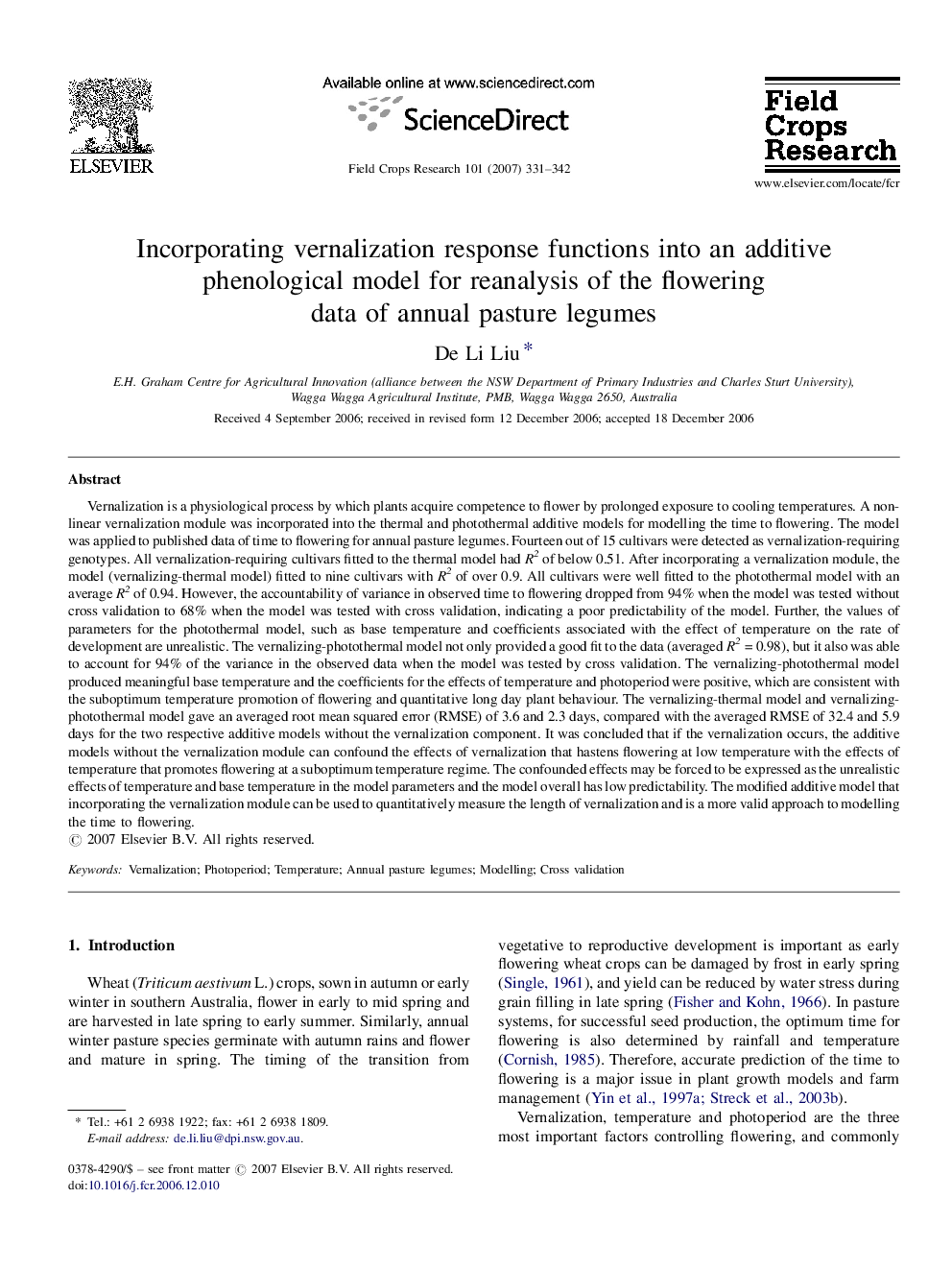| کد مقاله | کد نشریه | سال انتشار | مقاله انگلیسی | نسخه تمام متن |
|---|---|---|---|---|
| 4511452 | 1321912 | 2007 | 12 صفحه PDF | دانلود رایگان |

Vernalization is a physiological process by which plants acquire competence to flower by prolonged exposure to cooling temperatures. A non-linear vernalization module was incorporated into the thermal and photothermal additive models for modelling the time to flowering. The model was applied to published data of time to flowering for annual pasture legumes. Fourteen out of 15 cultivars were detected as vernalization-requiring genotypes. All vernalization-requiring cultivars fitted to the thermal model had R2 of below 0.51. After incorporating a vernalization module, the model (vernalizing-thermal model) fitted to nine cultivars with R2 of over 0.9. All cultivars were well fitted to the photothermal model with an average R2 of 0.94. However, the accountability of variance in observed time to flowering dropped from 94% when the model was tested without cross validation to 68% when the model was tested with cross validation, indicating a poor predictability of the model. Further, the values of parameters for the photothermal model, such as base temperature and coefficients associated with the effect of temperature on the rate of development are unrealistic. The vernalizing-photothermal model not only provided a good fit to the data (averaged R2 = 0.98), but it also was able to account for 94% of the variance in the observed data when the model was tested by cross validation. The vernalizing-photothermal model produced meaningful base temperature and the coefficients for the effects of temperature and photoperiod were positive, which are consistent with the suboptimum temperature promotion of flowering and quantitative long day plant behaviour. The vernalizing-thermal model and vernalizing-photothermal model gave an averaged root mean squared error (RMSE) of 3.6 and 2.3 days, compared with the averaged RMSE of 32.4 and 5.9 days for the two respective additive models without the vernalization component. It was concluded that if the vernalization occurs, the additive models without the vernalization module can confound the effects of vernalization that hastens flowering at low temperature with the effects of temperature that promotes flowering at a suboptimum temperature regime. The confounded effects may be forced to be expressed as the unrealistic effects of temperature and base temperature in the model parameters and the model overall has low predictability. The modified additive model that incorporating the vernalization module can be used to quantitatively measure the length of vernalization and is a more valid approach to modelling the time to flowering.
Journal: Field Crops Research - Volume 101, Issue 3, 15 March 2007, Pages 331–342